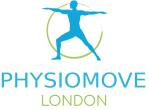
Is Stretching the Only Option in Preventing Injuries?
Have you ever pulled a muscle just reaching for something on a high shelf, or felt a twinge in your back after a seemingly simple workout? You’re not alone. Many of us have experienced those unexpected injuries that seem to come out of nowhere. Often, we believe that stretching is the key to preventing these everyday aches and pains. While stretching is important and beneficial, it’s only one piece of the puzzle.
At Physiomove London, we understand that injury prevention requires a comprehensive approach that goes beyond just stretching. Whether you’re an athlete, a weekend warrior, or someone who wants to stay active and healthy, there are various strategies you can employ to keep injuries at bay.
The Role of Stretching
Stretching is widely recognised for its benefits in enhancing flexibility and muscle health. Static stretching, which involves holding a stretch for 15-60 seconds, is most beneficial post-exercise, while dynamic stretching, which involves moving parts of your body and gradually increasing reach or speed of movement, is ideal before physical activities.
Findings reveal that although stretching is essential for maintaining flexibility and range of motion, it’s not a standalone solution for injury prevention. It works best when integrated into a broader injury prevention strategy.
Strength Training for Stability
Strength training is a cornerstone of injury prevention, providing numerous benefits that extend beyond just building muscle. Insights show that by enhancing muscle strength, you create a robust support system for your joints, improve overall body stability, and increase resilience against physical stress. Here’s how to effectively incorporate strength training into your injury prevention routine:
Muscle strength acts as a protective shield for your bones and joints. Strong muscles absorb more impact and reduce the strain on your skeletal system, thereby lowering the risk of injuries such as sprains, strains, and fractures. Strength training also improves coordination and balance, which are critical for preventing falls.
Also, balance and proprioception exercises are vital for preventing falls and related injuries, especially as we age. These exercises improve your body’s ability to know where it is in space and react accordingly. Simple exercises like standing on one leg, heel-to-toe walking, and practising Tai Chi can significantly reduce the risk of falls and injuries by enhancing coordination and stability.
Using proper technique and form during exercise and daily activities is critical in preventing injuries. Common mistakes, such as improper lifting techniques or poor posture during exercise, can lead to strains and injuries. Prioritising correct form over the amount of weight or intensity, using mirrors or seeking feedback to maintain proper form, and learning techniques from professionals can prevent injuries and improve performance.
Nonetheless, while staying active is important, overtraining can be detrimental. It’s crucial to balance intense workouts with adequate rest and nutrition to prevent injuries. Listen to your body, and if you experience persistent pain or fatigue, it may be a sign that you need to scale back and allow for recovery.
Warm-Up and Cool-Down Routines
Research shows that warming up and cooling down are essential components of any exercise routine. A proper warm-up increases blood flow to your muscles, enhancing flexibility and reducing stiffness, preparing your body for physical activity. Light cardiovascular activities such as jogging or brisk walking, combined with dynamic stretches like leg swings and arm circles, are effective warm-up exercises.
Cooling down helps gradually lower your heart rate and return your body to a resting state, aiding in reducing muscle soreness. Light aerobic activities such as walking or slow jogging, along with static stretching targeting the muscles you’ve worked during your activity, form an effective cool-down routine.
The Importance of Rest, Recovery and Nutrition
Rest and recovery are just as important as active training in preventing injuries. Overtraining can lead to overuse injuries, which occur when you push your body too hard without adequate rest. Ensuring adequate sleep, staying hydrated, and incorporating active recovery activities like walking or yoga into your routine are effective ways to allow your body to recover and prevent overuse injuries.
Nutrition plays a pivotal role in injury prevention. Studies show that proper nutrition provides the building blocks for muscle repair, bone strength, and overall physical health. Malnutrition and improper diet can lead to muscle weakness, decreased bone density, and increased susceptibility to injuries like stress fractures and muscle tears.
Balanced Diet for Stronger Muscles and Bones
Protein: Essential for muscle repair and growth. Include sources like lean meats, fish, eggs, dairy, beans, and legumes.
Calcium and Vitamin D: Vital for bone health. Dairy products, leafy greens, and fortified foods are excellent sources, along with safe sun exposure or supplements for Vitamin D.
Hydration: Proper hydration is crucial for maintaining muscle function and preventing cramps. Drink plenty of water throughout the day, especially before, during, and after workouts.
In conclusion, while stretching is an important component of injury prevention, it is far from the only method. A comprehensive approach that includes strength training, proper warm-up and cool-down routines, balance and proprioception exercises, correct technique, and adequate rest and recovery is essential.
At Physiomove London, our team of experts is dedicated to helping you develop a personalised injury prevention plan that fits your needs. By incorporating these strategies, you can significantly reduce your risk of injuries and maintain an active, healthy lifestyle.

